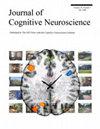Direct Retrieval of Orthographic Representations in Chinese Handwritten Production: Evidence from a Dynamic Causal Modeling Study
IF 3.1
3区 医学
Q2 NEUROSCIENCES
引用次数: 0
Abstract
This present study identified an optimal model representing the relationship between orthography and phonology in Chinese handwritten production using dynamic causal modeling, and further explored how this model was modulated by word frequency and syllable frequency. Each model contained five volumes of interest in the left hemisphere (angular gyrus [AG], inferior frontal gyrus [IFG], middle frontal gyrus [MFG], superior frontal gyrus [SFG], and supramarginal gyrus [SMG]), with the IFG as the driven input area. Results showed the superiority of a model in which both the MFG and the AG connected with the IFG, supporting the orthography autonomy hypothesis. Word frequency modulated the AG → SFG connection (information flow from the orthographic lexicon to the orthographic buffer), and syllable frequency affected the IFG → MFG connection (information transmission from the semantic system to the phonological lexicon). This study thus provides new insights into the connectivity architecture of neural substrates involved in writing.中文手写输入中正字法表征的直接检索:来自动态因果建模研究的证据
本研究利用动态因果建模法确定了代表中文手写输入中正字法和语音之间关系的最佳模型,并进一步探讨了该模型如何受词频和音节频率的调节。每个模型都包含左半球五个感兴趣的区域(额叶下回、额叶中回、角回、边际上回和额叶上回),其中额叶下回是驱动输入区。结果表明,MFG 和 AG 均与 IFG 相连的模型具有优势,支持了正字法自主性假说。词频调节了 AG → 上额回连接(从正字法词典到正字法缓冲区的信息流),而音节频率影响了 IFG → MFG 连接(从语义系统到语音词典的信息传输)。因此,这项研究为了解与书写有关的神经基质的连接结构提供了新的视角。
本文章由计算机程序翻译,如有差异,请以英文原文为准。
求助全文
约1分钟内获得全文
求助全文
来源期刊
CiteScore
5.30
自引率
3.10%
发文量
151
审稿时长
3-8 weeks
期刊介绍:
Journal of Cognitive Neuroscience investigates brain–behavior interaction and promotes lively interchange among the mind sciences.

 求助内容:
求助内容: 应助结果提醒方式:
应助结果提醒方式:


